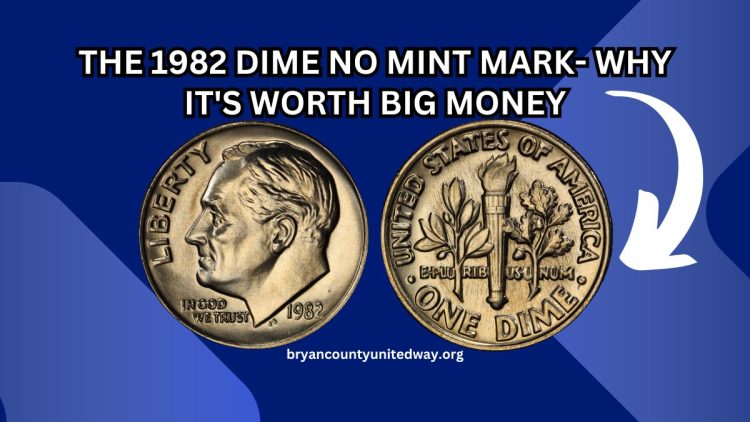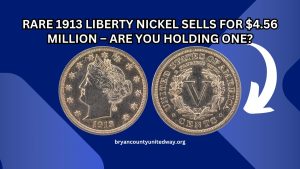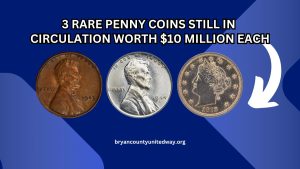The 1982 No Mint Mark Dime stands as a remarkable anomaly in U.S. coinage, capturing the attention of collectors and enthusiasts alike.
This rare error has transformed an ordinary ten-cent piece into a sought-after treasure, commanding prices far exceeding its face value.
In this comprehensive guide, we’ll delve into the origins, characteristics, and valuation of this unique coin, providing you with the insights needed to identify and understand its worth.
The Genesis of the 1982 No Mint Mark Dime
In 1982, the U.S. Mint in Philadelphia produced dimes intended to bear the ‘P’ mint mark, a practice initiated in 1980 to distinguish coins minted at this facility. However, due to an oversight, a batch of dimes was struck without this crucial identifier.
This error occurred when a mint employee neglected to punch the ‘P’ mint mark into a single obverse die, leading to the production of dimes lacking the mint mark. Approximately 75,000 of these error coins entered circulation, primarily discovered in Sandusky, Ohio, and surrounding areas.
Identifying the 1982 No Mint Mark Dime
To determine if you possess one of these rare dimes, examine the obverse (front) side of the coin:
- Date: Ensure the coin is dated 1982.
- Mint Mark Location: Look above the date for the mint mark. A standard 1982 Philadelphia dime should display a ‘P’. If no letter is present, you may have a valuable find.
Variations: Strong vs. Weak Strikes
Collectors have identified two distinct varieties of the 1982 No Mint Mark Dime based on the clarity of the strike:
- Strong Strike: These coins exhibit sharp, well-defined details, indicating a fresh die was used during minting.
- Weak Strike: These dimes display less distinct features, suggesting the die was worn or improperly prepared.
The strong strike variety is generally more desirable among collectors due to its crisp detail.
Valuation and Market Trends
The value of a 1982 No Mint Mark Dime varies based on its condition and strike quality. Below is a table summarizing the approximate values:
| Condition | Weak Strike | Strong Strike | Strong Strike with Full Bands (FB) |
|---|---|---|---|
| MS-60 | $75 | $100 | $150 |
| MS-63 | $150 | $200 | $300 |
| MS-65 | $225 | $300 | $500 |
| MS-67 | $1,000 | $1,500 | $2,000+ |
Note: MS denotes Mint State, with higher numbers indicating better preservation. Full Bands (FB) refers to the complete separation of the bands on the torch’s fasces on the reverse side, a detail that enhances the coin’s value.
These valuations are approximate and can fluctuate based on market demand and the coin’s specific attributes.
Factors Influencing Value
Several elements impact the value of the 1982 No Mint Mark Dime:
- Condition: Coins in mint state (uncirculated) condition command higher prices.
- Strike Quality: Strong strikes are more valuable than weak ones.
- Full Bands Designation: Dimes exhibiting full separation of the bands on the torch’s fasces are especially prized.
- Certification: Coins authenticated and graded by reputable services like PCGS or NGC often fetch higher prices due to assured authenticity and condition assessment.
Recent Sales and Auction Highlights
The 1982 No Mint Mark Dime has achieved notable prices at auctions:
- An MS-68 graded coin realized $2,185 in a 2004 Heritage Auctions sale.
- Another example, graded MS-67 FB, sold for $1,380 in a 2007 David Lawrence Rare Coins auction.
These instances underscore the coin’s desirability and the premiums collectors are willing to pay for top-quality specimens.
The 1982 No Mint Mark Dime exemplifies how minting errors can elevate the value of everyday currency. Its unique history, coupled with its rarity, makes it a prized addition to any coin collection.
If you suspect you possess one of these dimes, a thorough evaluation and professional grading can provide clarity on its authenticity and worth. As the numismatic community continues to cherish such anomalies, the allure and value of the 1982 No Mint Mark Dime are poised to endure.
FAQs
How can I verify if my 1982 dime is the No Mint Mark variety?
Examine the obverse side above the date. If there’s no ‘P’ mint mark present, you may have the rare variety.
Does the absence of a mint mark always indicate a valuable coin?
Not necessarily. Prior to 1980, Philadelphia-minted dimes lacked mint marks. The 1982 No Mint Mark Dime is valuable due to its unintended omission.
Where can I sell my 1982 No Mint Mark Dime?
Consider reputable coin dealers, auction houses, or online platforms specializing in numismatics. Certification can enhance its marketability.
Are there other coins with similar mint mark errors?
Yes, other notable examples include the 1968 No S Proof Dime and the 1975 No S Proof Dime, both highly valued by collectors.




